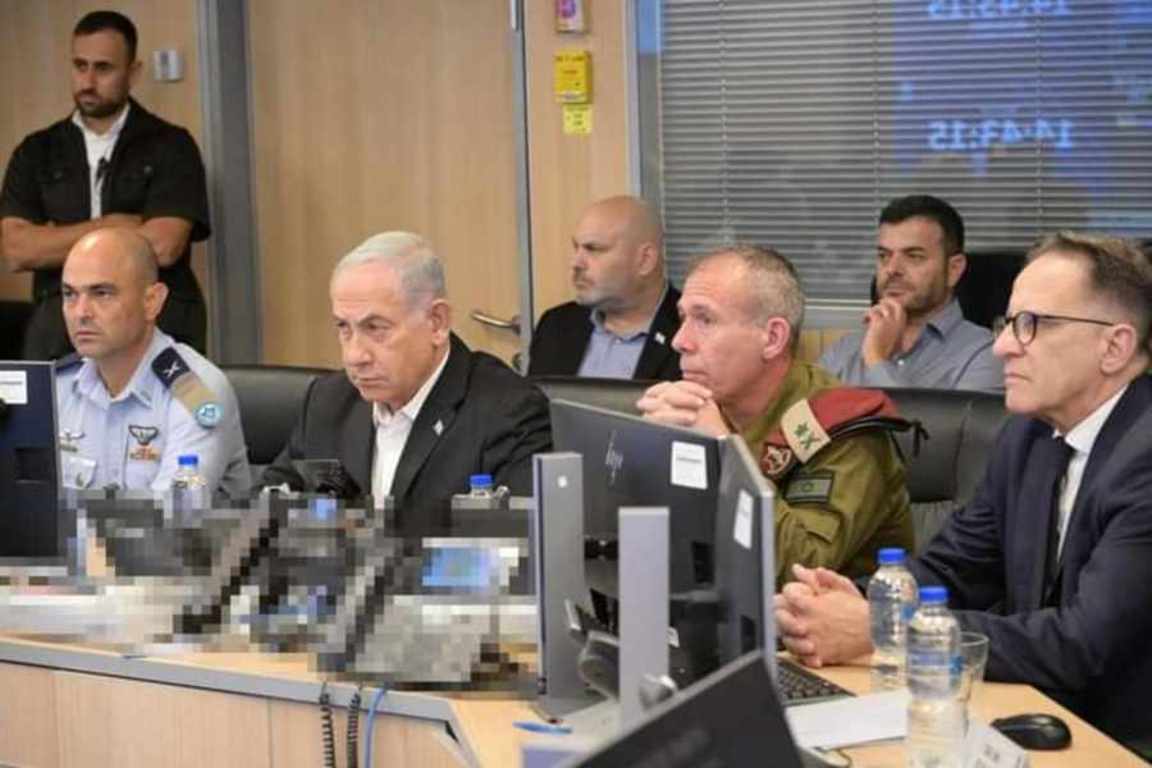Republicans are criticizing the Biden administration after Hamas militants launched the deadliest attack on Israel in years. President Joe Biden’s critics claim that a recent hostage-release agreement provided Iran with access to $6 billion in frozen funds, and that, as a result, that money could have helped Iran fund Hamas’ attack.
Neither Israel nor the White House have said that there’s a direct link between Iran and Hamas’ attack on Israel. But Iran is a longtime supporter of Hamas. And a Hamas spokesperson told the BBC that Iran gave “direct” backing.
“The Biden Administration must be held accountable for its appeasement of these Hamas terrorists, including handing over billions of dollars to them and their Iranian backers,” U.S. Rep. Steve Scalise, R-La., wrote on X Oct. 7. Scalise, the House majority leader, is one of two candidates for House speaker.
Several GOP presidential contenders, including former President Donald Trump speaking in New Hampshire, also argued that Biden emboldened Iran to aid the surprise attack.
On NBC’s “Meet the Press,” Nikki Haley, the former South Carolina governor and United Nations ambassador, criticized U.S. Secretary of State Antony Blinken, saying she thought it was “irresponsible” for Blinken to downplay the $6 billion.
“I mean, let’s be honest with the American people and understand that Hamas knows and Iran knows they’re moving money around as we speak because they know $6 billion is going to be released,” Haley said Oct. 8. “That’s the reality.”
And in an Oct. 7 video on X, Florida Gov. Ron DeSantis said, “Iran has helped fund this war against Israel and Joe Biden’s policies that have gone easy on Iran have helped fill their coffers.”
Experts told PolitiFact that the question of whether the hostage deal was wise, and any connection it may have had to Hamas’ assault, is difficult to answer. They said that both the White House and Republican critics have valid points.
Here’s an analysis of several key elements of the dispute.
Where does the $6 billion figure come from?
In August, the U.S. announced an agreement with Iran to secure freedom for five U.S. citizens who’d been detained in the country in exchange for allowing Iran to access $6 billion of its own funds that had been frozen in South Korean banks.
The money consisted of Iranian oil revenue frozen since 2019, when Trump imposed a ban on Iranian oil exports and sanctions on its banking sector. (It was not, as some have suggested, U.S. taxpayer money.)
The agreement also included the release of five Iranians held in U.S. prisons.
Even before Hamas’ Oct. 7 attack, the agreement was politically divisive, with Biden supporters praising the return of the hostages and critics saying that the payment amounted to a ransom that would encourage future hostage-taking.
But the Biden administration rebutted the notion that the agreement hastened or aided the Oct. 7 attack, flagging two key points.
On the Oct. 8 edition of “Fox News Sunday,” John Finer, the Biden administration’s deputy national security adviser, rejected “any implication” that money that hasn’t been spent yet could have “had any role in the attacks that took place — in planning them, in equipping the parties that conducted them.”
First, the money hasn’t been disbursed to Iran yet. When the freed Americans arrived in the U.S. in mid-September, the Iranian money was deposited into a restricted Qatari bank account. Qatar’s central bank is overseeing the funds, and Iran has not accessed the money, according to U.S. officials.
Second, the deal required that Iran would be able to access this money only to pay for humanitarian items, such as medicine and food.
Is there evidence linking Iran to the Hamas attack in Israel?
The U.S. has said it hasn’t seen definitive proof of Iranian involvement, but is investigating possible connections. Because Hamas and Iran are longtime allies, it’s plausible that Iran helped Hamas design or carry out the attacks.
The sophistication and scale of the attack by Hamas, an Islamist militant group that controls Gaza, suggests that Hamas might have benefited from Iranian assistance. Assailants hit Israel by land, air and sea, leaving at least 900 Israelis dead. Iran applauded the operation but denied involvement.
A Hamas spokesperson told the BBC the group received direct support from Iran to conduct its attack. The Wall Street Journal reported that Iranian security officials helped plan and execute the assault.
But experts said any specific connection between the $6 billion and the Hamas attack is uncertain, because whatever support Iran would be providing Hamas would almost certainly have occurred with or without the hostage deal.
Despite having reservations about the hostage agreement’s merits, “I don’t see any tangible connection between the $6 billion and this Hamas war,” said Matthew Levitt, a senior fellow at the Washington Institute for Near East Policy, a think tank focused on the Middle East.
“Iran was already spending significant funds on Hamas and Hezbollah (another Iranian-backed terrorist group based in Lebanon) before this deal,” Levitt added. For years, Iran’s government has “prioritized supporting militant and terrorist proxies over providing services for its own people,” he said.
John Pike, director of the nonprofit think tank globalsecurity.org, said Hamas would not necessarily have needed a share of the $6 billion to mount its attack.
“Paragliders are cheap, and Hamas already had the rockets,” Pike said.
Why do critics say Iran, or Hamas, might benefit anyway from the $6 billion?
Biden’s critics argue that Hamas could indirectly benefit from money that Iran will eventually be able to secure from the hostage deal.
For starters, confirming that the money is withdrawn only for humanitarian purposes is easier said than done, experts said.
The U.S. Treasury Department said most details on the verification process are not public. However, a spokesperson pointed us to the Treasury’s Office of Foreign Assets Control, which has said the process is similar to other humanitarian channels established under previous presidential administrations, and that it is designed with “stringent due diligence measures that guard against money laundering, misuse, and evasion of U.S. sanctions.”
In September, the White House said that it would lock Iran’s funds if it tried to divert them for nonhumanitarian purposes.
But Biden critics’ core argument is that money is fungible. That means that once you have money or expect to get money soon, you can spend it however you want.
“The safeguards in place are surely good enough to make sure only legitimate goods are purchased using those funds,” Levitt said. “But nobody can say what’s then done with those goods.”
Foreign policy analysts told PolitiFact that fungibility is a legitimate concern in this case.
“If you had a large end-of-year bonus payment coming your way, might you start spending more money in the meantime? Of course. Money is fungible,” said Matthew Kroenig, a Georgetown University professor of government and foreign service.
This is especially true in a country with a highly centralized economy and government, Levitt added. The Islamic Revolutionary Guard Corps, an influential military branch within Iran, “controls so much of the Iranian economy, there’s no way to have comfort (that) the goods aren’t sold and some funds go to underwrite militancy.”







